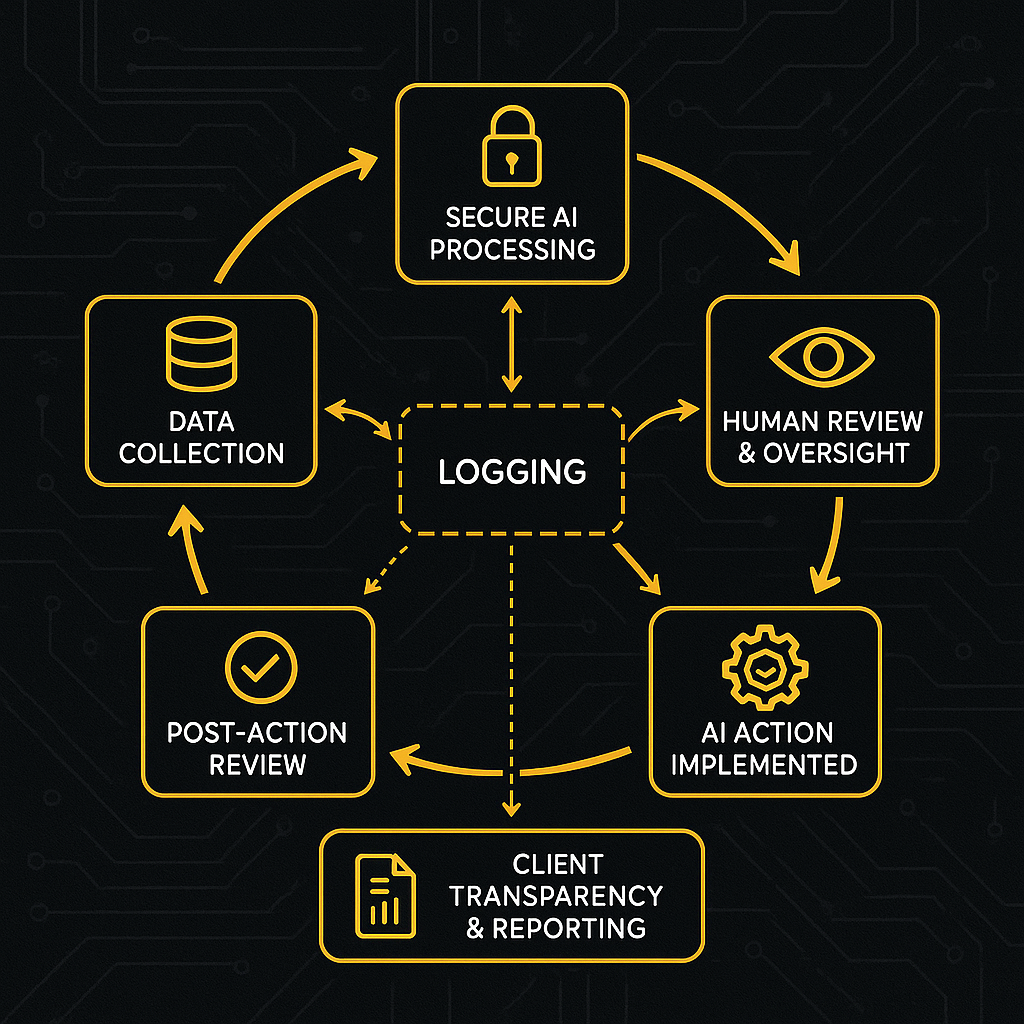How to Create an Effective AI Transparency Statement for Your Business
Artificial Intelligence (AI) is transforming industries—automating customer support, tailoring marketing campaigns, and analyzing data to drive decisions. But with these capabilities come questions about fairness, data privacy, and oversight. An AI Transparency Statement shines a light on your processes, builds trust with clients and partners, and keeps you ahead of evolving regulations. This guide explains why every business needs one and walks you through crafting your own, using clear, industry-agnostic examples.
Why an AI Transparency Statement Matters
Builds Stakeholder Trust
Whether you run a retail store or a consulting firm, clients want assurance that AI-driven decisions—like product recommendations or risk assessments—are fair and transparent.Mitigates Risk
Laying out how AI models are monitored and evaluated helps you identify gaps, prevent unintended biases, and demonstrate responsibility to auditors.Demonstrates Accountability
By specifying human checkpoints and logging practices, you show that AI outputs—such as credit approvals or inventory forecasts—aren’t unchecked “black boxes.”Prepares for Future Compliance
With regulations like the EU AI Act and U.S. guidance on the horizon, a living transparency document ensures you’re ready for whatever standards come next.
Core Elements of Your AI Transparency Statement
Aim for clarity and brevity—mix narrative with concise call-outs. Include these five pillars, illustrated with generic examples:
1. Inventory of AI Tools & Use Cases
Briefly describe each AI-driven feature in your operations:
AI Chatbot for Customer FAQs
Role: Answers common questions about hours, returns, or scheduling.
Data Input: Customer’s typed inquiry and public product information.Automated Invoice Processing
Role: Scans and categorizes incoming invoices for quicker approvals.
Data Input: Invoice date, amount, and vendor name (no personal data).
2. Governance & Human Oversight
Explain how you maintain control:
Human Review Points: “All high-value purchase approvals flagged by AI are reviewed by our finance team.”
Audit Schedule: “We conduct quarterly audits of our recommendation algorithms to check for accuracy and fairness.”
Decision Logging: “Every automated decision—like restock alerts or personalized offers—is recorded with a timestamp and model version.”
3. Data Protection & Privacy Measures
Reassure stakeholders about data handling:
Encryption: “All data used by AI systems is encrypted in transit (TLS) and at rest (AES-256).”
Access Controls: “Only designated team members can view raw AI outputs and the underlying data.”
Retention Policy: “Usage logs and reports are retained for 12 months before secure deletion.”
4. Reporting & Client Access
Tell interested parties how they can see AI in action:
On-Demand Reports: “Clients can request a summary report showing every time AI generated a product suggestion or marketing segment.”
Delivery Format: “Reports are provided as easy-to-read PDFs or dashboard views with clear summaries.”
5. Continuous Improvement & Feedback
Commit to ongoing refinement:
Review Cadence: “We update this statement annually or whenever new AI capabilities are introduced.”
Feedback Channels: “Questions or suggestions can be sent to ai-feedback@yourcompany.com or discussed during client check-ins.”
Step-by-Step: Building Your Own Statement
Audit Your AI Footprint
List every AI feature you use—from chatbots to demand forecasting.
Note its purpose and the type of data it processes.
Map the AI Lifecycle
Sketch a simple flow:Data Input → AI Processing → Human Review → Action Taken → Logging
Assign Roles & Responsibilities
Identify who configures each AI tool, who reviews outputs, and who leads audits.
Clarify accountability at every stage.
Draft Clear, “We-Centered” Language
Use first-person plural (“we”) to convey collective responsibility.
Alternate short paragraphs with bullet lists to improve readability.
Validate Against Best Practices
Compare your draft to guidelines like the OECD AI Principles.
Adjust to cover any ethical or governance gaps.
Publish & Share
Host the statement on your website, intranet, or compliance portal.
Share highlights via newsletters or client meetings to ensure broad visibility.
Solicit Feedback & Iterate
Invite input from legal, operations, and customer teams.
Update the document on your scheduled cadence or when AI tools change.
Tips for a Successful Transparency Statement
Visual Aids: Use simple icons or flowcharts to illustrate governance checkpoints.
Concise Length: Target 1,000–1,500 words—deep enough to be informative, yet easy to digest.
Living Document: Include a “Last Updated” date and a change log at the end.
Clear Contact Point: End with, “Questions? Reach out at ai-feedback@yourcompany.com.”
Conclusion
An AI Transparency Statement is more than compliance—it’s a demonstration of your commitment to responsible, ethical automation. By following these steps, you’ll create a clear, client-friendly document that builds trust, uncovers risks, and positions your business for future regulatory demands.
Ready to craft your own AI Transparency Statement? Download our free template now and take the first step toward transparent, trustworthy AI practices!

